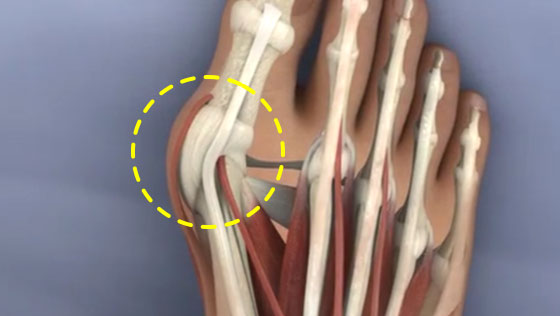What is an Ankle Sprain?
An ankle sprain occurs when one or more of the ligaments that stabilize the ankle joint are stretched or torn.
- Approximately 2 million ankle sprains occur every year in the United States[1]
- 12 to 47% of all ankle sprains occur in individuals who have previously sustained a sprained ankle[1]
- Higher rates of ankle sprains are sustained by individuals between the ages of 10 and 19[2]
- Approximately 85% of ankle sprains are lateral ankle sprains[3]
- Up to 40% of individuals who sustain a lateral ankle sprain for the first time will go on to develop chronic ankle instability[4]
Expert Insights
Understanding Ankle Sprains - J. Carr Vineyard, MD
Anatomy
The ankle is a complex joint formed by three bones: the tibia, the fibula, and the talus

Ligaments connect bones to other bones, stabilizing the joint.
The lateral collateral ligament (LCL) complex consists of three ligaments on the lateral side (outside) of the ankle, which connect the fibula to the bones of the foot and resist ankle inversion (rolling the foot inward). The LCL ligaments include the anterior talofibular ligament (ATFL), the calcaneofibular ligament (CFL), and the posterior talofibular ligament (PTFL).

The medial collateral ligament (MCL) complex (also known as the deltoid ligament) consists of superficial and deep ligaments on the medial side (inside) of the ankle, which connect the tibia to the bones of the foot and resist ankle eversion (rolling the foot outward).

What is the Cause of an Ankle Sprain?
Ankle sprains are one of the most frequent injuries to individuals of all ages and activity levels[3]. An ankle sprain is most commonly the result of an injury that forces the ankle ligaments beyond their normal range of motion, causing one or more of the ligaments to stretch or tear.
Activities that can lead to an ankle sprain include:
- Falling and twisting the foot either inward (inversion) or outward (eversion)
- Walking or running on an uneven surface
- Engaging in activities that include jumping or quickly changing direction such as basketball and soccer
Approximately 85% of ankle sprains are to the LCL complex and are a result of an inversion injury[3] (rolling the foot inward). The ATFL is the weakest and most commonly torn ligament of the LCL complex[3]. The MCL complex is much stronger than the lateral ankle ligaments, making it much less likely to tear, but injury can happen as a result of an eversion injury (rolling the foot outward). A high ankle sprain involves injury to one or more of the ligaments that connect the tibia and fibula directly above the ankle joint. Typically, high ankle sprains are more severe, but much less common than other ankle sprains, making up only 5-10% of all sprains[6].

What are the Classifications of an Ankle Sprain?
Ankle sprains are classified by the amount of damage sustained by the affected ligaments:
- Grade 1: ligaments are stretched and may sustain microscopic tears
- Grade 2: ligaments are partially torn
- Grade 3: ligaments are fully torn (ruptured)
What are the Symptoms of an Ankle Sprain?
The symptoms of an ankle sprain commonly include:
- Pain at rest and when bearing weight on the affected foot
- Tenderness to touch
- Swelling
- Bruising
- Ankle instability
How is an Ankle Sprain Treated?
Most individuals who suffer from a sprained ankle can successfully resolve symptoms through nonsurgical techniques such as:
- Rest and not bearing weight on the affected ankle
- Ice and use of anti-inflammatory medication to reduce inflammation
- Compression of the affected ankle to minimize swelling
- Elevation of the affected ankle to reduce swelling
- Physical therapy including strengthening and proprioception (balance) exercises
- In some cases an ankle boot or brace may be recommended
In rare cases, surgical intervention may be necessary to address an ankle sprain that cannot be treated with nonsurgical measures. Surgery for a sprained ankle most commonly involves removing any loose fragments of bone or cartilage in the joint, as well as repairing or reconstructing the damaged ligament with sutures or a tissue graft.
Recovery time from ankle sprains depends upon the severity of the injury, and individuals most often make a full recovery from two weeks to three months following the sprain.
What is Chronic Ankle Instability?
It is very common for individuals who suffer a lateral ankle sprain to go on to experience recurrent sprains, with up to 40% of those individuals developing chronic ankle instability (CAI)[4]. CAI is characterized by the repeated “giving way” of the lateral side of the ankle following a lateral ankle sprain or sprains. This results in laxity (looseness) of the lateral ankle ligaments and joint instability.
CAI can be treated with nonsurgical measures such as physical therapy and immobilization of the affected foot, but CAI typically requires surgical reconstruction of the ligaments with tissue grafts[5].
Find an Orthopedic Doctor in Your Area





